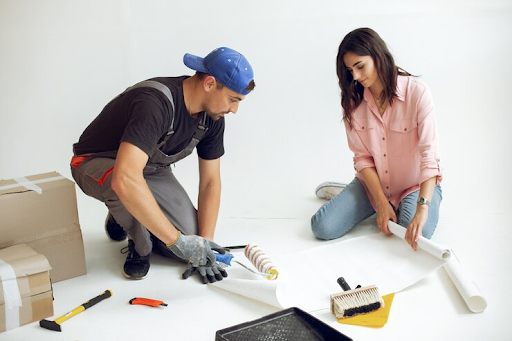Owning a home is a rewarding experience, but it also comes with many obligations, such as upkeep and repairs. Some issues may need professional help. However, there are numerous common home repairs that every homeowner should be equipped to handle.
This article delves into the top five common home repairs, including how to handle challenging or time-consuming ones.
Unclog a Dishwasher
A dishwasher that isn’t draining will not be performing properly and will undoubtedly disturb your cleaning schedule. Thankfully, there are a few reliable procedures you can use to unclog a dishwasher rapidly and restore its functionality.
You should inspect that the dishwasher filter is accessible from the junk, examine the drain and check the drain host to guarantee they are all clear.
If you discover a jammed dishwasher, you may need to seek professional help, as this involves disassembling and reassembling the appliance.
Hide Hardwood Floor Scrapes and Gouges
While that gouge in your flooring looks awful, it can probably be fixed without a whole renovation of your hardwood floors. Simple scratches can be covered with stain markers that blend the wood floor’s colour.
This is more of a disguise than a proper repair, making them much less noticeable. For deeper scrapes and gouges, use paste wax. Rub some of a similar shade into the scratch, then polish off the extra after it has dried.
Gouges deeper than 1/4 deep can be filled using acrylic wood filler, but you must wait four hours between applications. Spot-fixes are for spot-fixes, while full refinishing is recommended for all-over scratches and damage on hardwood floors.
Concrete Spalling
With time, ceilings can experience deterioration and may result in concrete spalling. This occurs when implanted steel rods corrode, causing cracks, bulges, and, in extreme conditions, the risk of collapse. Regular inspections and prompt maintenance can detect early signs of concrete spalling, enabling proactive measures to be taken before the problem worsens.
If you notice cracks or bulges in your ceiling, it’s advisable to seek professional help to assess the damage and recommend necessary repairs.
Moreover, concrete pavement repair can address similar issues in other concrete structures around your property, ensuring structural integrity and safety.
Clean Driveway
Few homeowners understand the significance of regularly cleaning their driveway. Especially if you park your vehicle on the Home Driveway Paving, inspect frequently for oil stains. Car oil can break down the driveway, decreasing its life and causing minor cracks.
Mix washing liquid, salt crystals, and bleach in a bucket of water, cover the paved area with soapy water, and let it sit. Use a hard-bristled brush to scrub the surface after the soap-water mixture has been on it for approximately half an hour.
Applying Caulk
Caulk is the rubbery bead between your bathtub, shower, or sink and the wall or between your toilet’s exterior border and the flooring. It produces a seal that shields floors and walls from moisture. It also adheres to itself, making its application an easy, one-step procedure. Over time, caulk can change colour or deteriorate, making your home susceptible to water damage and mould growth.
The challenging aspect of installing caulk is eliminating the residue left by the old material. Without thoroughly removing the old caulk, the new bead won’t stick, so upright preparation is vital. In ancient times, caulk had to be removed using a razor scraper, and it took some time to get it all off.
Now, there are a number of products available that will soften old caulk and facilitate its removal. Putty knives are useful for easily scraping off treated caulk residue. After the old caulk disappears, wipe the area with paint thinner and allow it to dry thoroughly. Now, you’re prepared to proceed with the installation process.




